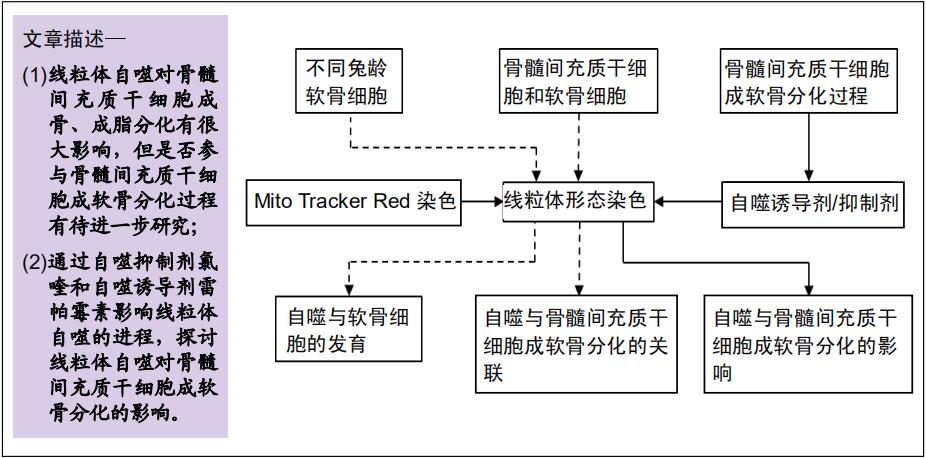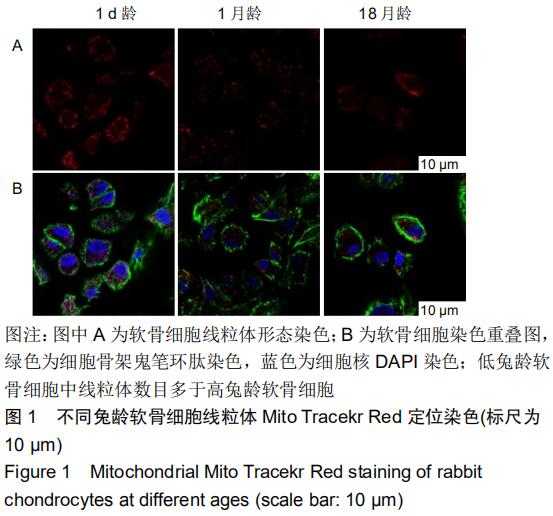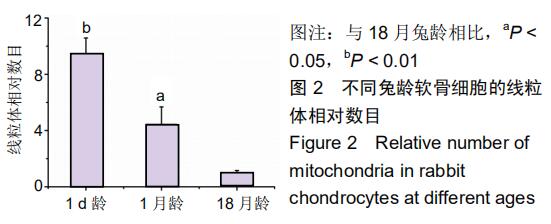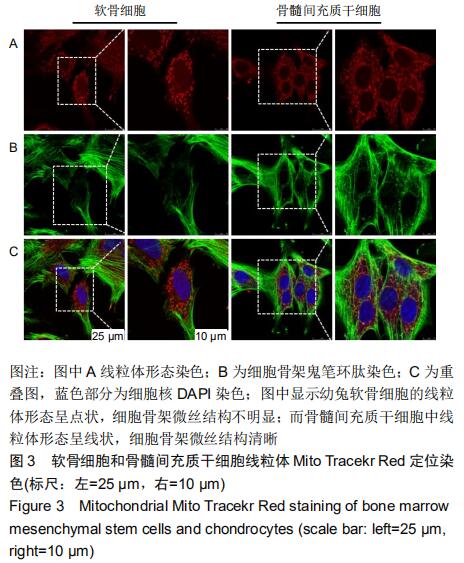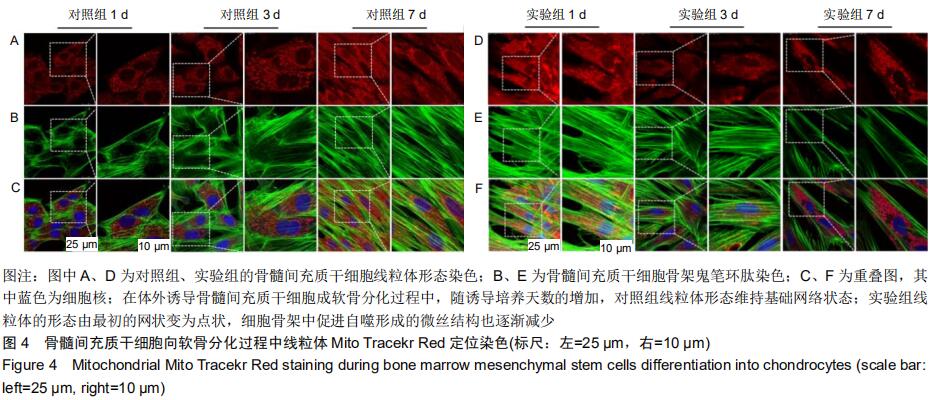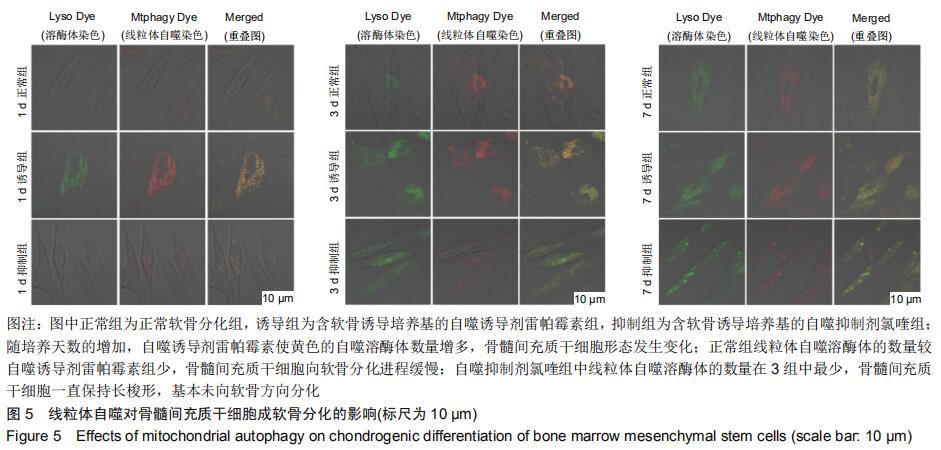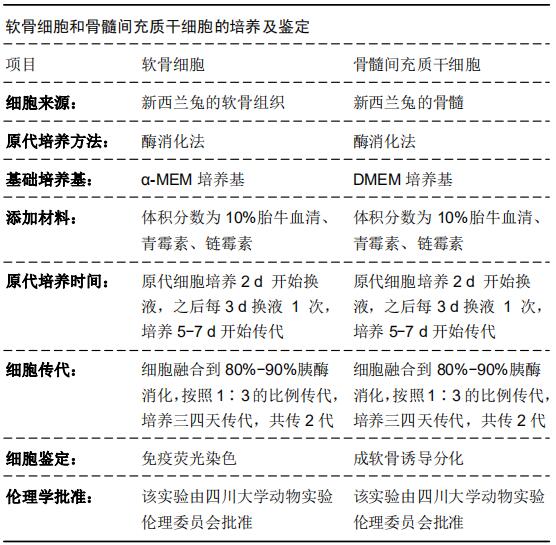|
[1] BLANCO FJ, REGO-PÉREZ I. Mitochondria and mitophagy: biosensors for cartilage degradation and osteoarthritis. Osteoarthritis Cartilage. 2018;26(8):989-991.
[2] JUNG YH, LEE HJ, KIM JS, et al. EphB2 signaling-mediated Sirt3 expression reduces MSC senescence by maintaining mitochondrial ROS homeostasis. Free Radic Biol Med. 2017;110: 368-380.
[3] WOLFF P, HEIMANN L, LIEBSCH G, et al. Oxygen-distribution within 3-D collagen I hydrogels for bone tissue engineering. Mater Sci Eng C Mater Biol Appl. 2019;95:422-427.
[4] XIANG G, YANG L, LONG Q, et al. BNIP3L-dependent mitophagy accounts for mitochondrial clearance during 3 factors-induced somatic cell reprogramming. Autophagy. 2017;13(9):1543-1555.
[5] SINHA KM, TSENG C, GUO P, et al. Hypoxia-inducible factor 1α (HIF-1α) is a major determinant in the enhanced function of muscle-derived progenitors from MRL/MpJ mice. FASEB J. 2019; 33(7):8321-8334.
[6] PEI DD, SUN JL, ZHU CH, et al. Contribution of Mitophagy to Cell-Mediated Mineralization: Revisiting a 50-Year-Old Conundrum. Adv Sci (Weinh). 2018;5(10):1800873.
[7] LAMPERT MA, OROGO AM, NAJOR RH, et al. BNIP3L/NIX and FUNDC1-mediated mitophagy is required for mitochondrial network remodeling during cardiac progenitor cell differentiation. Autophagy. 2019;15(7):1182-1198.
[8] FU W, LIU Y, YIN H. Mitochondrial Dynamics: Biogenesis, Fission, Fusion, and Mitophagy in the Regulation of Stem Cell Behaviors. Stem Cells Int. 2019;2019:9757201.
[9] ZENG R, FANG Y, ZHANG Y, et al. p62 is linked to mitophagy in oleic acid-induced adipogenesis in human adipose-derived stromal cells. Lipids Health Dis. 2018;17(1):133.
[10] LUO P, GAO F, NIU D, et al. The Role of Autophagy in Chondrocyte Metabolism and Osteoarthritis: A Comprehensive Research Review. Biomed Res Int. 2019;2019:5171602.
[11] MARYCZ K, KORNICKA K, GRZESIAK J, et al. Macroautophagy and Selective Mitophagy Ameliorate Chondrogenic Differentiation Potential in Adipose Stem Cells of Equine Metabolic Syndrome: New Findings in the Field of Progenitor Cells Differentiation. Oxid Med Cell Longev. 2016;2016:3718468.
[12] 杨俊丽,韩霞,孙明启,等.兔骨髓间充质干细胞的生物学特征及原代培养[J].中国组织工程研究,2015,19(50):8043-8047.
[13] ZHENG J, CROTEAU DL, BOHR VA, et al. Diminished OPA1 expression and impaired mitochondrial morphology and homeostasis in Aprataxin-deficient cells. Nucleic Acids Res. 2019;47(8):4086-4110.
[14] LI Q, GAO S, KANG Z, et al. Rapamycin Enhances Mitophagy and Attenuates Apoptosis After Spinal Ischemia-Reperfusion Injury. Front Neurosci. 2018;12:865.
[15] RODENAS-ROCHINA J, KELLY DJ, GÓMEZ RIBELLES JL, et al. Influence of oxygen levels on chondrogenesis of porcine mesenchymal stem cells cultured in polycaprolactone scaffolds. J Biomed Mater Res A. 2017;105(6):1684-1691.
[16] 王玉全,李程程,孟爱民,等.线粒体在细胞衰老中的作用[J].医学综述, 2019,25(8):1457-1462.
[17] LIN H, SOHN J, SHEN H, et al. Bone marrow mesenchymal stem cells: Aging and tissue engineering applications to enhance bone healing. Biomaterials. 2019;203:96-110.
[18] 刘恒,刘超,曹永平.软骨细胞线粒体功能异常在关节软骨早期退变中的作用[J].中国矫形外科杂志,2011,19(8):652-654.
[19] WAI T, LANGER T. Mitochondrial Dynamics and Metabolic Regulation. Trends Endocrinol Metab. 2016;27(2):105-117.
[20] MURATA D, ARAI K, IIJIMA M, et al. Mitochondrial division, fusion and degradation. J Biochem. 2020;167(3):233-241.
[21] PODESTÀ MA, REMUZZI G, CASIRAGHI F. Mesenchymal Stromal Cells for Transplant Tolerance. Front Immunol. 2019;10: 1287.
[22] LI H, LI X, JING X, et al. Hypoxia promotes maintenance of the chondrogenic phenotype in rat growth plate chondrocytes through the HIF-1α/YAP signaling pathway. Int J Mol Med. 2018;42(6): 3181-3192.
[23] VINCENT G, NOVAK EA, SIOW VS, et al. Nix-Mediated Mitophagy Modulates Mitochondrial Damage During Intestinal Inflammation. Antioxid Redox Signal. 2020 Mar 31. doi: 10.1089/ars.2018.7702. [Epub ahead of print]
[24] ESTEBAN-MARTÍNEZ L, BOYA P. BNIP3L/NIX-dependent mitophagy regulates cell differentiation via metabolic reprogramming. Autophagy. 2018;14(5):915-917.
[25] HO TT, WARR MR, ADELMAN ER, et al. Autophagy maintains the metabolism and function of young and old stem cells. Nature. 2017;543(7644):205-210.
[26] HARPER JW, ORDUREAU A, HEO JM. Building and decoding ubiquitin chains for mitophagy. Nat Rev Mol Cell Biol. 2018;19(2): 93-108.
[27] RAMBOLD AS, KOSTELECKY B, ELIA N, et al. Tubular network formation protects mitochondria from autophagosomal degradation during nutrient starvation. Proc Natl Acad Sci U S A. 2011;108(25):10190-10195.
[28] GOMES LC, DI BENEDETTO G, SCORRANO L. During autophagy mitochondria elongate, are spared from degradation and sustain cell viability. Nat Cell Biol. 2011;13(5):589-598.
[29] MAUTHE M, ORHON I, ROCCHI C, et al. Chloroquine inhibits autophagic flux by decreasing autophagosome-lysosome fusion. Autophagy. 2018;14(8):1435-1455.
[30] IWAI-KANAI E, YUAN H, HUANG C, et al. A method to measure cardiac autophagic flux in vivo. Autophagy. 2008;4(3):322-329.
[31] XU LX, TANG XJ, YANG YY, et al. Neuroprotective effects of autophagy inhibition on hippocampal glutamate receptor subunits after hypoxiaischemia-induced brain damage in newborn rats. Neural Regen Res. 2017;12(3):417-424.
[32] SINGH AK, SINGH S, TRIPATHI VK, et al. Rapamycin Confers Neuroprotection Against Aging-Induced Oxidative Stress, Mitochondrial Dysfunction, and Neurodegeneration in Old Rats Through Activation of Autophagy. Rejuvenation Res. 2019;22(1): 60-70.
[33] 陈哲,白海,潘耀柱,等.辐射诱导人骨髓间充质干细胞自噬反应的研究[J].中华血液学杂志,2011,32(9):602-605.
[34] YUAN T, LUO H, GUO L, et al. In vivo immunological properties research on mesenchymal stem cells based engineering cartilage by a dialyzer pocket model. J Mater Sci Mater Med. 2017;28(10):150.
[35] NI Y, TANG Z, YANG J, et al. Collagen structure regulates MSCs behavior by MMPs involved cell-matrix interactions. J Mater Chem B. 2018;6(2):312-326.
[36] DHANABALAN K, HUISAMEN B, LOCHNER A. Mitochondrial oxidative phosphorylation and mitophagy in myocardial ischaemia/reperfusion: effects of chloroquine. Cardiovasc J Afr. 2019;30:1-11.
|
